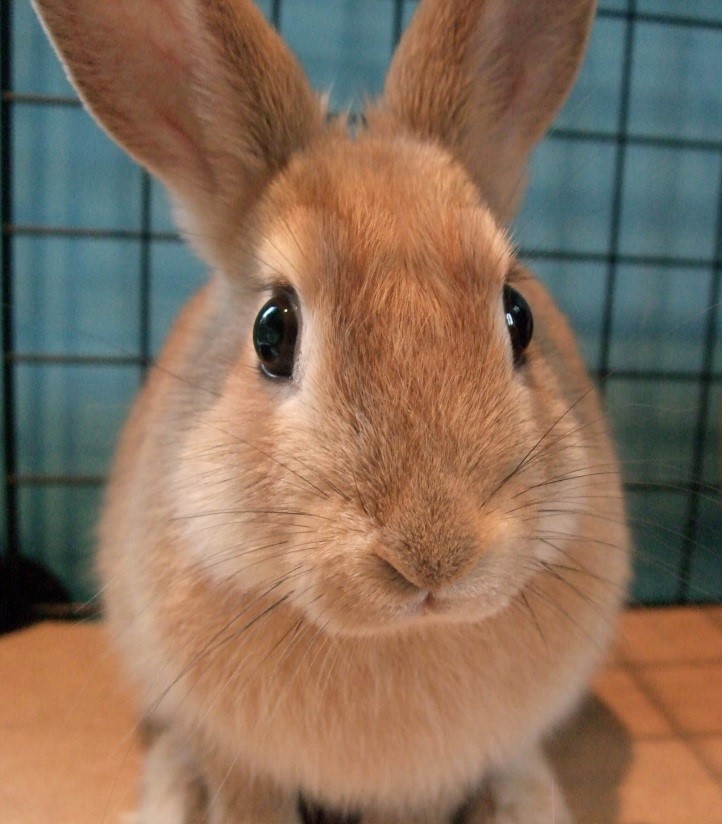CHAPTERS
Navigate to chapter
► Chapter One: Lionhead Rabbit in Focus
► Chapter Two: Lionhead Requirements
► Chapter Three: Purchasing Your Lionhead Rabbit
► Chapter Four: Caring for Your Lionhead Rabbit
► Chapter Five: Meeting Your Rabbit’s Nutritional Needs
► Chapter Six: Breeding Your Lionhead Rabbit
► Chapter Seven: Grooming Your Lionhead Rabbit
► Chapter Eight: Showing Lionhead Rabbits
► Chapter Nine: Keeping Your Rabbit Healthy
Chapter One: Lionhead Rabbit in Focus

Lionhead rabbits may often time look like your cute crush, your worried parents, your friendly pal, your playful sibling or that very adorable kid you always wanted. In whatever attitude or mood it appeals, you can expect it to be lively, intelligent, adorable, and a caring devoted pet you’ve always dreamed of.
The lionhead rabbit is a breed of rabbit that is eligible for shows. They are irresistibly cute but it may not be the right choice for everyone. Before you decide whether or not it might be the right pet for you and your family, you need to learn and invest a significant amount of time in getting to know these animals.
In this chapter you will receive an introduction to the Lionhead rabbit breed including some basic facts and information as well as the history of how it came about. This information, in combination with the practical information about keeping Lionhead rabbit in the next chapter, will help you decide if this is the perfect rabbit companion for you.
In this section you’ll find some interesting fun facts about lionhead rabbits, how to differentiate them through their body type, the types of their mane and history.
Lionhead rabbits are small to medium sized rabbits that have a compact body and a head that resembles that of a lion, hence its name. They like to be around people and have a knack for a good time but don’t let their cuteness fool you, these rabbits are also known for being getting scared easily compared to other rabbit breeds, and if it feels threatened it may cause aggression, which is why it is advisable that owners should socialize them at an early age.
These rabbits have small wooly heads and they usually have a normal roll back over the saddle, some also have transitional wool on their flanks or skirts. The most common colors for the Lionhead breed are Black, Black Otter, Blue, Blue Otter, Chestnut, Chinchilla, Chocolate, Fawn, Frosted Pearl, Golden, Lilac, Opal, Orange, Red, Siamese Sable, Smoke Pearl, Sable Point, Squirrel, Sable Martin, Tan, Tortoise, and White.
Even if Lionhead rabbits are a fairly new breed, they are now qualified for a rabbit show and it is recognized by the British Rabbit Council (BRC), American Rabbit Breeders Association (ARBA), North American Lionhead Rabbit Club (NALRC) as well as international rabbit organizations like the European Confederation of Rabbits, Pigeons and Poultry.
The Lionhead rabbit is a very playful, intelligent, friendly creature and a highly trainable breed, this breed also have wide variety of colors and patterns created by breeders and rabbit enthusiasts. Lionhead rabbits are also fond of chewing like any other pets, and they can comprehend certain orders as well. They can even respond to their name which makes them great house pets much like cats and dogs; the only difference is that rabbits are generally more low maintenance. They cherish people with whom they form very strong bonds with. They are gentle and understanding and they can be naturally people-oriented.
Proper socialization and training from a young age will help prevent the rabbit from being aggressive to people. Lionheads do very well as family pets and they can also be good with children – although may not be recommended for very young children.
The Lionhead is a Ring size C that has a well-rounded body. This breed weigh an average of 2 ½ to 3 ½ pounds. They also have bold and bright eyes.
Like any other pets, rabbits also have a great deal of energy and needs daily exercise to work off that energy through the toys that you can provide. It can adapt to almost any kind of environment, they are generally curious yet controllable indoors as long as they get enough mental and physical stimulation during the day and has proper house training as well as litter training.
The average lifespan for the Lionhead breed is between 7 and 9 years; the breed is very healthy in general. Like many rabbits, however, the Lionhead is prone to health issues such as Urine Burn, Pasteurellosis, Pneumonia, E. Cuniculi, Ringworm, Hepatic and Intestinal Coccidiosis, Abscesses and Calcivirus which will be tackled in the next few chapters later on in this book. In terms of grooming, the Lionhead rabbits need to be brushed and groomed regularly in order to keep their coat and skin healthy, a daily brushing may be required for some.
This section will give you an idea on what kind of body type your lionhead rabbit may have and how you can distinguish it from other kinds of breed. Aside from the ear type, you can also differentiate a rabbit through the type of its fur.
Here are the general body types and shapes of rabbit breeds according to the ARBA:
Full Arch
These rabbits have an arched back that starts at the nape of the neck, arching to the tail.
Semi-Arch (or Mandolin)
These rabbits have an arched back that starts behind the shoulders and arches to the tail.
Compact
These rabbits are lighter and shorter in length than meat rabbits, usually kept for show or kept as pets.
Cylindrical
These rabbits have a long, thin, rounded body with small bones and a long, slender head.
Commercial
These are rabbits that are medium in size with bodies about as wide as they are deep.
You can also differentiate a rabbit through their purpose or the reason why they are bred in the first place. It can be shown by the type of their fur or body shape.
Wool Rabbits
Lionhead rabbits belong in this category. These are rabbits which produce wool in the same way that a sheep produces wool.
Fur Rabbits
These rabbits are bred for their soft, thick fur which can be used for coats and trim on clothing.
Meat Rabbits
These rabbits grow quickly and are usually ready for slaughter by about 8 to 12 weeks of age.
Lionhead Rabbit Colors and Patterns
Lionhead rabbits come in different colors and patterns. For the most detailed description of these colors and patterns, refer to the breed standards set forth by the ARBA and the BRC.
Continue Reading…
Want to read the entire thing?


